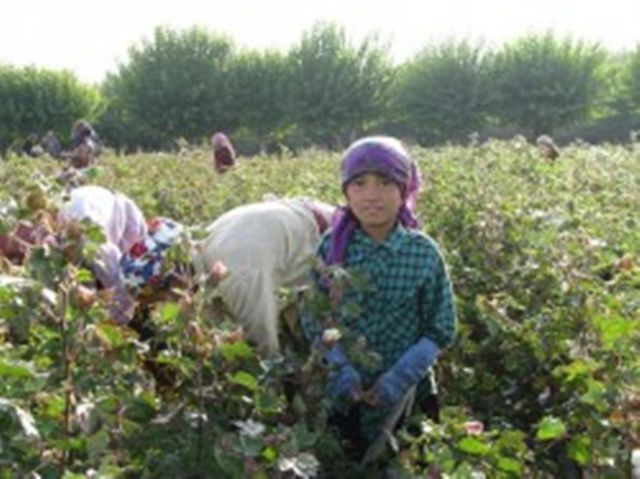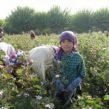
US Repeats Policy Mistakes In Uzbekistan
Publication: Eurasia Daily Monitor Volume: 8 Issue: 85
By:

(Part One)
Since the May 2005 armed uprising in Andijan, the US has been slowly rebuilding its relationship with Uzbekistan, culminating most recently in the Uzbek government’s almost instantaneous agreement to allow its territory to be used by the US Department of Defense as a key link in the Northern Distribution Network (NDN) supplying US and ISAF forces in Afghanistan. The importance of the NDN to the Afghanistan war effort cannot be overstated given the constant interdiction of supplies through Pakistan by the Taliban and its Pakistani supporters in recent years. However, this fragile US-Uzbek relationship appears to be on the verge of possible collapse due to arcane and illogical actions by the State Department Office to Monitor and Combat Trafficking in Persons (G-TIP).
The G-TIP Office, part of the State Department’s Bureau of Global Affairs, has taken up the cause of a number of anti-Uzbekistan NGOs and possibly competing cotton exporters to vilify Uzbekistan over the continuation of the Soviet-era policy of mobilizing students and government officials to assist in annual agricultural harvests, in the case of Uzbekistan, the cotton harvest. G-TIP recently released an interim assessment of the countries placed on the Tier 2 Special Watch List, and Uzbekistan is among them. Tier 2 Special Watch List is a category between Tier 2 and 3, where countries are placed if they do not fully comply with the minimum standards of the Trafficking Victims Protection Act of 2000 (TVPA), but are making significant efforts to bring themselves into compliance with those standards (Trafficking in Persons Interim Assessment, April 5). A Tier 3 rating would trigger suspension of most US assistance although given the NDN issue, the State Department is likely to issue a waiver in the event of the Tier 3 rating. However, Washington has made it clear that a Tier 3 rating will have consequences.
Ignoring the clear progress that Uzbekistan has made in regard to true trafficking in persons problems, the interim report gave Uzbekistan a negative assessment while at the same time praising progress by some of its neighbors such as Tajikistan and Turkmenistan (which have done little or nothing in regard to actual transnational trafficking of persons but have made some superficial moves, mostly funded by donors, in regard to cotton harvest labor). In particular, the Uzbekistan assessment began with the statement that “the government made no progress in combating domestic forced labor in the cotton sector and government complicity related to this forced labor. The use of forced child and forced adult labor remained widespread and systematic during the 2010 fall cotton harvest. The government took no steps to end the use of forced labor during the harvest and continued to facilitate it” (Trafficking in Persons Interim Assessment, April 5).
Although the Uzbek government has a presidential decree in effect against forced labor in the harvest, it admittedly does little to monitor the situation and local communities are responsible for meeting quotas. The lack of able-bodied adult male labor in rural communities due to labor migration to Russia and Kazakhstan, as well as to Tashkent and other major Uzbek cities, leaves little labor available to help in the harvest which for Uzbekistan, among the six largest producers of cotton worldwide and third in exports, is crucial to its foreign exchange earnings.
Anti-Uzbek cotton campaigns launched in 2008 by international and local US and UK organizations specifically target Uzbekistan. They pressure their governments and retailers to punish manufactures and producers who buy Uzbek cotton and propose the introduction of sanctions against Uzbekistan. While other top cotton producers, such as China, India, and Pakistan, where the involvement of children and adults in the cotton industry is much harsher and on a greater scale, do not appear to be in the focus of the G-TIP report or the campaigners.
Labeling the involvement of people mobilized from Uzbek communities, seasonally to assist in cotton harvesting as human trafficking by G-TIP is stretching the definition of the term and appears to be a continuation of the political campaign launched in the US and Europe (the UK in particular) in 2008 against Uzbekistan by political activists adamantly opposed to the current government. The involvement of children in labor has a cultural aspect, which was promoted once the collectivization process started in the Soviet era. Children were encouraged to help their farmer parents and relatives in cotton, corn, vegetable or other fields. Cotton production in Uzbekistan also has to be considered from a historical perspective. The Soviet legacy made cotton a high economic priority and a backbone of the economy in Uzbekistan. As the country was subjugated by Russia and forcibly transformed into the Russian Empire’s principal cotton colony, it created the labor chain of cotton production with a substantial level of social security despite the wage levels (Pros and Cons of Cotton Production in Uzbekistan, 2010).




